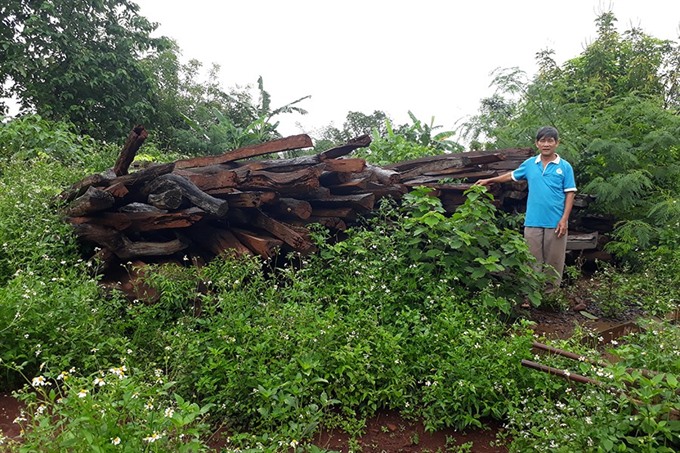 Society
Society

Chư Pưh District of
 |
| Dead pepper plants chopped down in Gia Lai Province’s Chư Pưh District. — Photo laodong.vn |
GIA LAI — Chư Pưh District of
Growing pepper changed the lives of local people. Thanks to the crop and the huge profits it brought, they could buy cars and build new houses. But in 2015, pepper plants started to die en masse due to weather changes and low-quality breeding. By 2017, there were almost no productive pepper trees left. The pepper price plunged from VNĐ200,000-250,000 (US$8.7-10.8) in 2014 to the current low of VNĐ47,000 ($2) per kg.
For a few years, locals tried to rescue the dying trees, pouring everything they had into reviving them. This year, they have accepted that the trees can no longer survive, and it is time for the growers to begin climbing out of the debt that has consumed them.
Pepper plant grower Văn Viết Sỹ, 69 years old of Ia Blứ Commune, used to hire 15 to 20 people to harvest pepper for three months during the peak season. Now he can only reminisce that time and accepted the harsh fact that 3,000 out of his 4,000 trees died. The others are about to die and are not productive.
On average, 1,000 trees require investment of about VNĐ1 billion ($43,500) including investment in land. The amount of money Sỹ lost was massive.
A majority of pepper growers in the district pawned their land lots and houses to borrow loans from commercial banks to invest in the pepper planting.
“Now men who are of working age are flocking to southern provinces and cities such as Bình Dương, Đồng Nai and
According to Đặng Thanh Long, a local of Ia Blứ Commune, up to 90 per cent of locals in the commune owed debts ranging from at least VNĐ200 million ($8,700) to VNĐ2 billion ($87,000).
The loans multiplied as people spent hundreds of thousands of đồng to hire engineers in the hopes of rescuing the plant.
According to State Bank of Việt Nam’s Gia Lai Province branch, local growers of the province owe over VNĐ4.3 trillion ($187 million). More than 8,000 households of Chư Pưh District owe about VNĐ1.5 trillion ($65 million).
Many borrowed loans with such high interest rates that their houses have been placed on lien.
The situation was so desperate that many children dropped out of school and have been left unattended by their parents who left home to search for work.
Local Đặng Thanh Long said: “If in the next one to two years, locals cannot find other plants to replace pepper, we have no choice but to hand in our land lots to banks or find another place to live.”
According to Hoàng Phước Bính, vice chairman and general secretary of the Pepper Association of Chư Sê District, the pepper supply has exceeded demand, resulting in plunging pepper prices, meaning that even people whose pepper trees are still healthy are struggling to make ends meet.
Trương Phước Anh, director of
He confessed that the warning should have been issued as soon as a large number of local people heard that growing pepper could bring huge profits and decided to chop down coffee and rubber plants to grow pepper.
Director Trương Phước Anh advised local growers to clean up their gardens and then burn dead pepper orchirds. For the next several years, they should leave land fallow to allow it to recover.
Bính from Chư Sê District’s pepper association recommended that farmers stop growing new pepper plants in five years and grow fruit trees, coffee and avocado plants which are suited to the soil and weather conditions of the Central Highlands region and also have high productivity.
The State Bank of